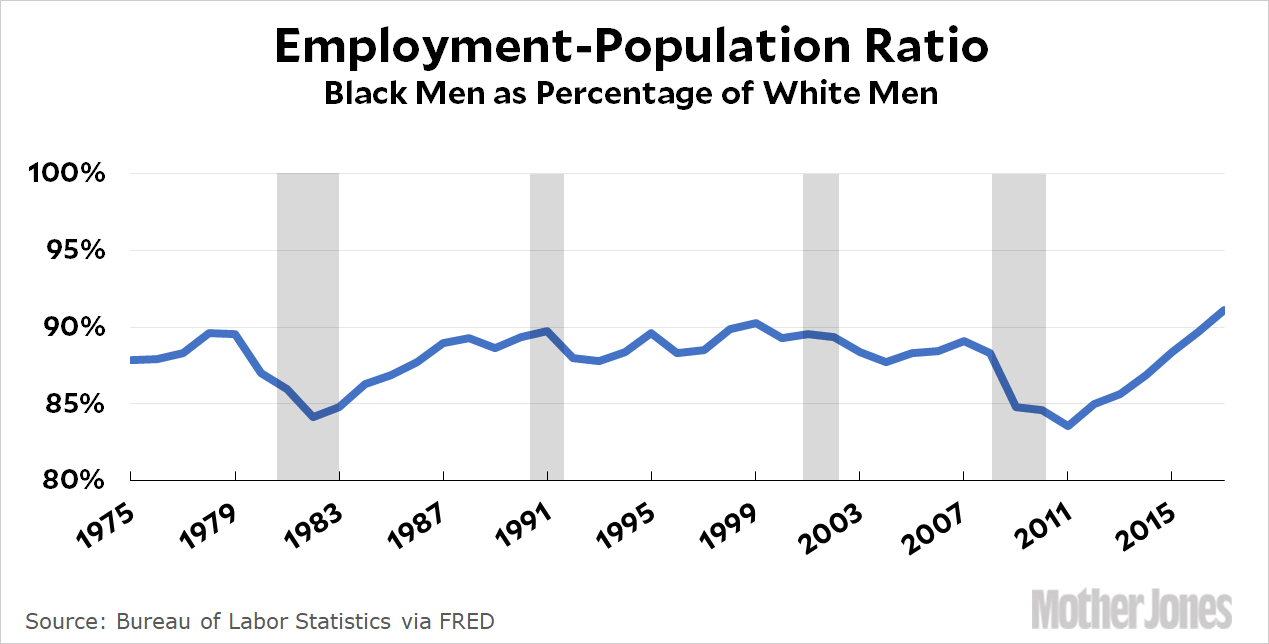Why have prime-age American men been leaving the labor force over the past few decades? Nancy LeTourneau suggests that part of the answer can be found in America’s turn to mass incarceration in the mid-70s:
[There is] an inverse parallel between the reduction of men in the workforce with the advent of mass incarceration, which began in earnest in the 1970s….Job seekers currently on probation or parole or who have ever been incarcerated are most likely to be refused consideration for a position.
….Men of color are hit especially hard. Studies find that white male and female job seekers with records have better employment chances than black or Hispanic applicants with records….To the extent that mass incarceration and a criminal record are a contributing factor when it comes to the reduction of men in the labor force, this country faces a whole different problem that isn’t likely to be solved with a federal jobs guarantee. What we need is criminal justice reform at both the federal and state level, re-entry programs for people coming out of prison and legislation like the REDEEM Act, which would allow for the expungement of criminal records.
This sounds pretty plausible, so I decided to check. Unfortunately, the data doesn’t seem to back up this theory:

We know that black men were more affected by mass incarceration than white men, so if the after-effect of incarceration is one of the reasons the employment rate of men has declined, then the employment rate of black men should have declined more than that of white men. But it hasn’t. The black employment rate as a percentage of the white employment rate has stayed level for 40 years.
What you do see in this chart is that black men are the first ones who are let go in recessions and the last to be rehired during expansions. That’s also remained the same for the past 40 years, with the effect bigger during bigger recessions. But eventually they do get rehired, and the black employment rate returns to about 90 percent of the white employment rate.
The incarceration theory sounds like it should hold water, and I’m a little surprised that it doesn’t seem to. But if it were true, we’d see a steeper downward trendline among blacks than whites, and we don’t.













